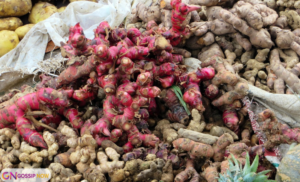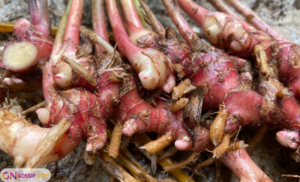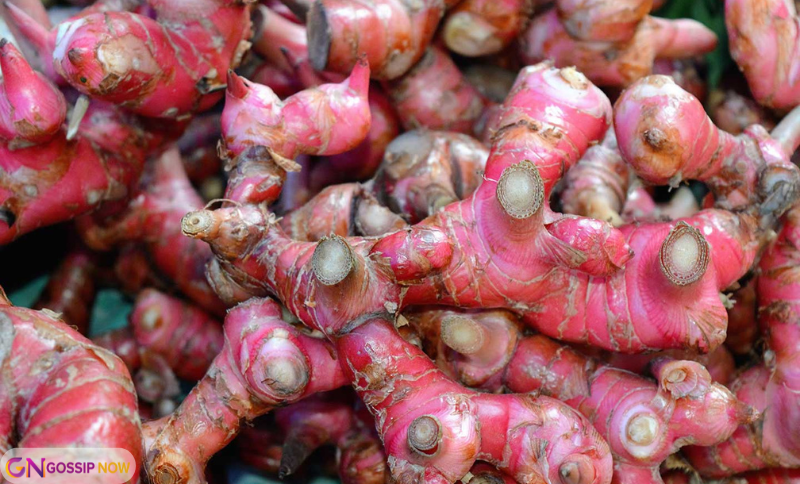Have you ever walked past a garden or into a restaurant and spotted a striking, fiery-red flower? Chances are, it was red ginger—an eye-catching plant that’s turning heads and making waves in kitchens, spas, and even social media feeds. But red_ginger is more than just a visual treat. From gourmet menus in Asheville to pickled accompaniments in Japanese cuisine, and from botanical gardens to health remedies, this vibrant bloom has a story to tell.
In this article, we’ll dive deep into everything red ginger—its plant profile, health benefits, culinary uses, and cultural significance. Whether you’re a food lover, a plant enthusiast, or just curious, this guide will keep you hooked.
🌿 What is Red Ginger?
 A Botanical Beauty
A Botanical Beauty
Red_ginger, also known as Alpinia purpurata, is a tropical flowering plant native to Malaysia, but now commonly grown across the Pacific, including Hawaii, Indonesia, and the Caribbean.
-
Scientific Name: Alpinia purpurata
-
Common Names: Red_ginger, ostrich plume, jungle king
-
Plant Type: Perennial herb
-
Height: Up to 6 feet tall
-
Flowers: Bright red bracts with small white flowers
With its lush green leaves and stunning red flowers, the red ginger plant adds a dramatic flair to any landscape. It thrives in warm, humid climates and is often used in tropical floral arrangements, garden landscaping, and wellness centers.
Red Ginger Flower — More Than Just Looks
The red_ginger flower is not just a decorative piece; it symbolizes strength, passion, and healing in many cultures. In Hawaiian traditions, it is used in leis and ceremonial offerings. Thanks to its vibrant color and long-lasting bloom, it is often the focal point in exotic floral displays.
🍽️ Red Ginger in Culinary Culture
Red Ginger on the Menu
You might be surprised to learn that red_ginger has a special place in the culinary world. While the red_ginger plant itself isn’t typically eaten, the pickled red_ginger—also known as beni shoga—is a Japanese staple.
Red Ginger Japanese Steakhouse and Sushi
Restaurants like Red_Ginger Japanese Steakhouse and Sushi have embraced the name for a reason. The brand evokes bold flavors and a fusion of tradition and innovation. Their Red_Ginger menu includes sushi rolls, hibachi-style dishes, and signature pickled red_ginger served as a side or topping.
In cities like Asheville, the Red_Ginger Asheville dining experience is all about:
-
Fresh ingredients
-
Artistic presentation
-
East-meets-West fusion
The Red_Ginger buffet option brings diversity and allows foodies to explore a variety of Asian delicacies, with red_ginger often served alongside spicy rolls or grilled meats.
Why Pickled Red Ginger?
Pickled red ginger is more than a colorful garnish. It:
-
Enhances digestion
-
Cuts through oily flavors
-
Acts as a palate cleanser
-
Offers a slightly spicy and tangy kick
Commonly served with yakisoba, okonomiyaki, and tonkatsu, it’s an essential part of traditional Japanese dining.
🩺 Health Benefits of Red Ginger
Nature’s Healing Root
While the red_ginger flower steals the spotlight, the root has been used in herbal medicine for centuries. Not to be confused with regular ginger, red_ginger has a spicier, more intense profile and is packed with beneficial compounds.
Key Benefits
-
Anti-inflammatory: Reduces swelling and joint pain
-
Antioxidant-rich: Fights free radicals
-
Digestive support: Aids in reducing bloating and nausea
-
Immunity booster: Enhances overall body defense mechanisms
Its therapeutic value makes it a popular ingredient in teas, oils, and health tonics. Many holistic wellness centers use red_ginger oil in aromatherapy for its soothing properties.
Growing the Red Ginger Plant at Home
Easy Tips for a Tropical Touch
Want to grow red_ginger in your own garden or balcony? You absolutely can!
Here’s how to get started:
-
Climate: Prefers tropical/subtropical weather
-
Soil: Moist, well-drained with organic compost
-
Sunlight: Partial to full shade
-
Watering: Keep soil moist but not soggy
-
Fertilizer: Feed monthly during growing season
The plant is low-maintenance and great for those wanting a splash of tropical beauty year-round.
🧪 Red Ginger in Modern Research and Scientific Studies
Interestingly, modern scientists now explore what traditional healers have practiced for centuries. In fact, several studies confirm that red ginger delivers impressive health benefits. Specifically, researchers identify bioactive compounds like gingerol and shogaol, which fight inflammation, bacteria, and oxidative stress. As a result, red ginger supports immune function and overall well-being. Moreover, research teams continue to investigate its ability to prevent chronic illnesses. Because of this, health experts now include red_ginger in many nutraceuticals and wellness products. Therefore, red ginger rises as both a respected traditional remedy and a modern scientific discovery.
🗺️ Cultural & Global Popularity

A Symbol Across Continents

A Symbol Across Continents
Red_ginger has taken root in many cultures:
-
Hawaii: Symbolizes royalty and respect
-
Japan: Used in both culinary and medicinal practices
-
Indonesia: Known as “Jahe Merah,” widely used in traditional healing
Thanks to globalization, it has found new meaning in the West as a symbol of health, beauty, and vibrancy.
🧘♀️ Red Ginger in Wellness and Beauty
Beyond the kitchen and garden, red_ginger is now making its way into spa treatments and skincare products. Known for its rejuvenating aroma and anti-inflammatory effects, it’s often infused in:
-
Massage oils
-
Herbal bath soaks
-
Anti-aging face masks
-
Scalp and hair oils
Summary: Why Everyone’s Talking About Red Ginger
From its visual appeal and medicinal value to its role in culinary art and global traditions, red_ginger is undeniably versatile. Whether you’re admiring its fiery bloom, enjoying a sushi platter, or sipping ginger tea, this plant is a celebration of flavor, health, and life.
Final Thoughts
Red_ginger isn’t just another exotic plant. It’s a botanical superstar with flavorful, cultural, medicinal, and decorative appeal. Whether you’re planning your next landscaping project, experimenting in the kitchen, or exploring natural wellness options—red_ginger deserves a spot in your life.
FAQs
1. Is red ginger the same as regular ginger?
No. Red_ginger (Alpinia purpurata) has a spicier flavor and is often used for decorative and medicinal purposes.
2. Can I eat red ginger flowers?
The flowers are typically not eaten raw, but the plant’s root is used in traditional medicine and herbal teas.
3. Where can I find pickled red ginger?
Pickled red_ginger is available at most Asian supermarkets and Japanese restaurants.
4. Is red ginger easy to grow at home?
Yes! With the right climate and care, red_ginger is a stunning addition to home gardens.
5. What is the Red Ginger Japanese Steakhouse and Sushi?
It’s a popular restaurant offering a wide variety of Asian dishes, including sushi and hibachi, often featuring red_ginger.






